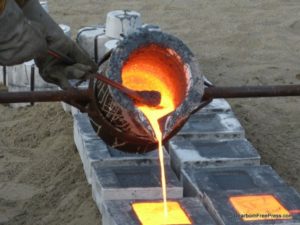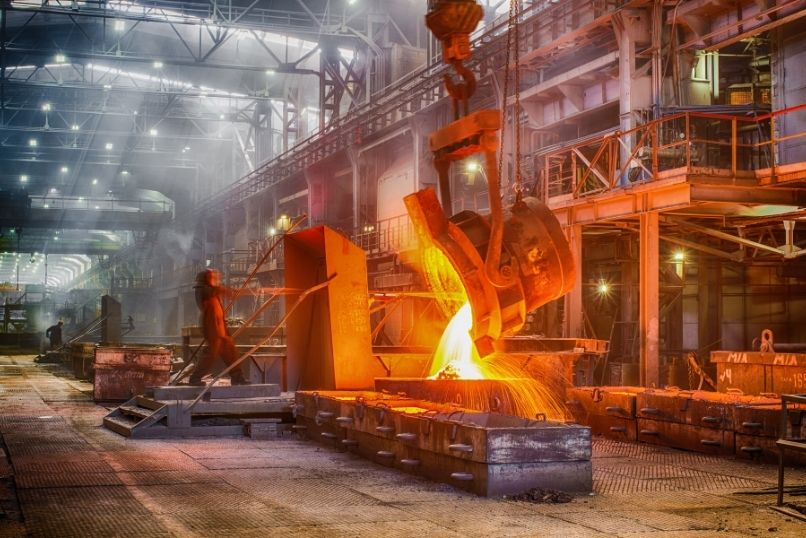Exploring how Metal Castings impact today’s manufacturing industries
Wiki Article
The Function of Metal Casting beforehand Production Technologies
Metal Casting have notably affected the evolution of producing modern technologies. They provide unique design versatility, enabling the development of detailed geometries crucial for various applications. Modern spreading techniques are being boosted by technologies like 3D printing and automation. These developments not only boost efficiency yet additionally address difficulties in accuracy and sustainability. As sectors continue to evolve, the function of Metal Casting continues to be important in forming their future. What exists ahead in this vibrant area?The Development of Steel Casting Methods
As the demand for precision and efficiency in production has grown, the advancement of Metal Casting strategies has undertaken significant change. Historically, Metal Casting began with straightforward techniques such as sand casting and lost-wax spreading, which enabled artisans to create intricate shapes. Over time, innovations in innovation presented procedures like die casting and investment spreading, boosting precision and minimizing waste. Metal Castings. The introduction of computer-aided style (CAD) and simulation software program transformed the preparation phases, enabling producers to anticipate potential issues and optimize designs prior to production. In addition, the development of new materials, such as sophisticated alloys and compounds, has actually expanded the range of applications for Metal Casting. Automation and robotics have further refined casting procedures, boosting consistency and performance. As an outcome, the Metal Casting industry has actually adapted to fulfill the requirements of contemporary production, concentrating on sustainability and advancement to stay affordable in an ever-evolving industry
Applications of Metal Casting in Secret Industries
The improvements in Metal Casting techniques have opened up a large variety of applications throughout different sectors. In the auto field, Metal Casting are important for generating engine blocks, transmission housings, and various other vital elements that call for high toughness and durability. The aerospace industry uses castings for intricate components like generator blades and structural components, making sure light-weight yet robust remedies for aircraft.
The building sector uses Metal Casting for structural elements such as light beams and installations, contributing to the stability of buildings and infrastructure. In the power market, spreadings play an essential role in making components for wind turbines and power generation equipment, enhancing effectiveness and dependability. Additionally, the medical area benefits from precision spreadings utilized in surgical instruments and prosthetics, demonstrating the flexibility of Metal Casting across varied applications. This broad usage highlights the value of Metal Casting in modern production techniques.
Advantages of Metal Casting in Modern Manufacturing
Metal Casting offer numerous benefits that significantly boost modern-day production processes. One important benefit is layout adaptability; Metal Casting enables for the development of complex forms and detailed geometries that are frequently hard or difficult to achieve with various other producing techniques. This capability enables suppliers to maximize item styles for functionality and efficiency.Additionally, Metal Casting can sustain a large range of products, including iron, aluminum, and steel, which can be tailored to satisfy particular mechanical residential or commercial properties and corrosion resistance requirements.

Cost-effectiveness is an additional notable benefit; Metal Casting processes can produce big amounts of parts with very little product waste, thereby reducing manufacturing costs.
In addition, the durability of cast steel components adds to the get redirected here durability of products, lowering the requirement for frequent substitutes. In general, the advantages of Metal Casting substantially add to efficiency, sustainability, and advancement within contemporary manufacturing settings.
Developments Driving the Future of Metal Casting
While typical Metal Casting methods have actually offered the sector well for decades, current developments are poised to reinvent the area. Advancements such as 3D printing innovation permit for quick prototyping and the manufacturing of intricate geometries that were previously unattainable. These innovations not just boost style adaptability but likewise decrease waste and reduce lead times. On top of that, the combination of automation and robotics in casting procedures is improving procedures, boosting precision, and enhancing employee safety. The growth of new alloys and composite products is making it possible for the production of more powerful, lighter castings customized for details applications. Digital innovations, including expert system and machine knowing, are optimizing spreading criteria and anticipating maintenance, driving improved top quality control. Jointly, these technologies are pushing the boundaries of Metal Casting, promoting higher effectiveness and sustainability in production, and placing the sector for future growth and competitiveness.Challenges and Solutions in Metal Casting Processes
As developments in Metal Casting technology remain to reshape the industry, different difficulties stay that producers should address to fully leverage these developments. One considerable issue is the irregularity in material homes, which can cause inconsistent quality and performance. This irregularity usually arises from changes in basic materials and handling conditions. Additionally, the increasing prices of power and materials position economic restrictions, pressing producers to seek more reliable processes.To battle these difficulties, companies are progressively taking on automated systems and progressed simulation techniques to boost precision and uniformity. Applying quality assurance procedures throughout the production process likewise assists in spotting defects early. In addition, purchasing study for different products might improve and reduce costs sustainability. By attending to these difficulties with cutting-edge services, the Metal Casting sector can enhance efficiency and keep competitiveness in the progressing production landscape.
Regularly Asked Inquiries
What Products Are Generally Made Use Of in Steel Casting Procedures?
Usual products utilized in Metal Casting procedures include aluminum, bronze, iron, and magnesium. Each product possesses unique homes that accommodate different applications, improving the convenience and functionality of the final cast items in numerous sectors.How Do Environmental Laws Effect Metal Casting Operations?
Ecological guidelines urge Metal Casting procedures to embrace cleaner modern technologies and methods, useful source commonly increasing manufacturing prices. Conformity might result in innovative processes that decrease waste and discharges, eventually promoting sustainability within the Metal Casting industry.What Are the Precaution in Metal Casting Facilities?
Precaution in Metal Casting facilities consist of correct air flow, personal protective equipment, routine safety training, devices upkeep, and adherence to security policies, guaranteeing a protected environment for employees while lessening threats connected with hazardous products and procedures.Exactly How Is Top quality Controlled in the Metal Casting Refine?
Quality control in Metal Casting entails rigorous assessments, consisting of visual assessments, dimensional checks, and product testing. Adherence to market requirements and applying top quality management systems guarantees that spreadings satisfy specific needs throughout the manufacturing process.
What Is the Future Task Expectation for Metal Casting Professionals?
The future work outlook for Metal Casting experts appears promising, driven by improvements in modern technology and increasing demand throughout various industries (Wisconsin Aluminum Foundry). Development in automation top article and sustainable practices will likely create new chances in this fieldHistorically, Metal Casting started with basic techniques such as sand casting and lost-wax casting, which permitted craftsmens to create detailed shapes. Over time, developments in innovation presented procedures like die casting and investment spreading, improving accuracy and reducing waste. In enhancement, the medical field benefits from accuracy castings made use of in surgical instruments and prosthetics, showing the versatility of Metal Casting throughout varied applications. Metal Casting supply numerous benefits that substantially boost contemporary manufacturing processes. Common products utilized in Metal Casting processes include aluminum, magnesium, bronze, and iron.
Report this wiki page